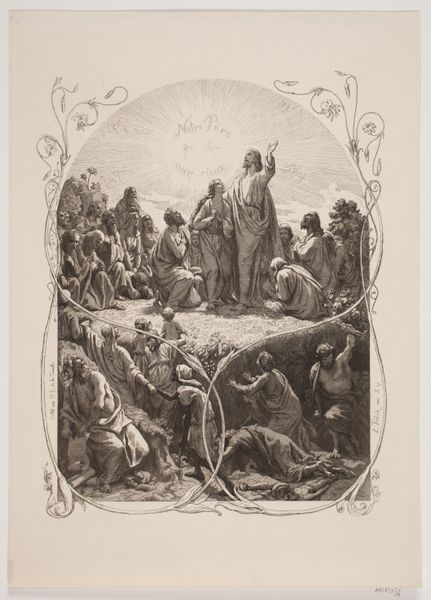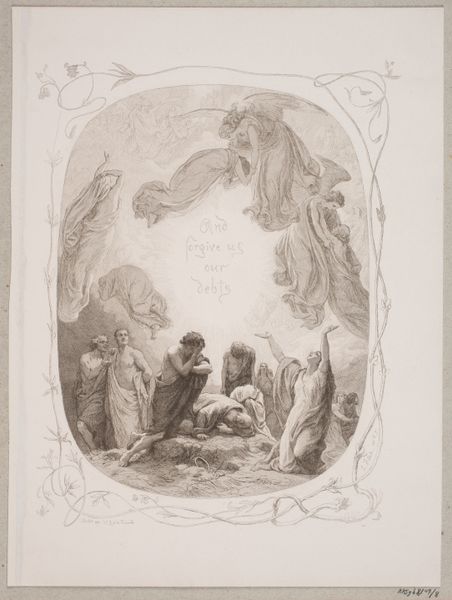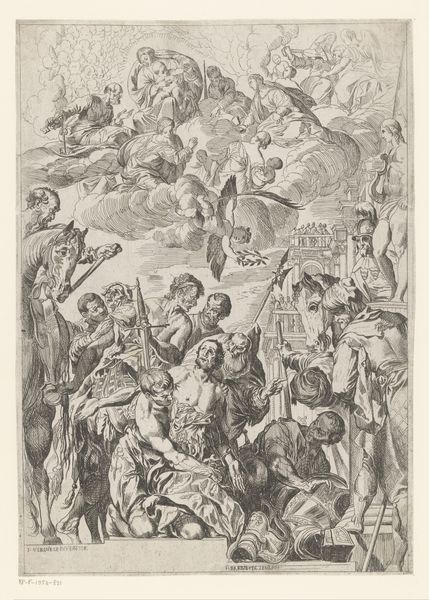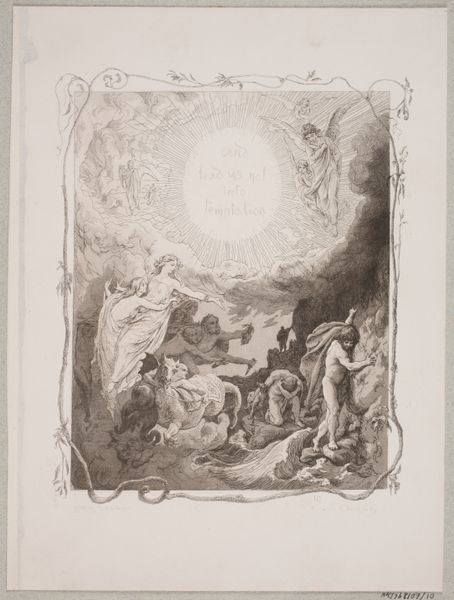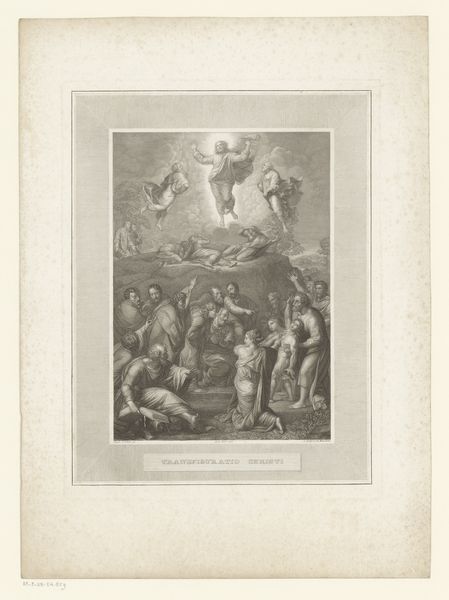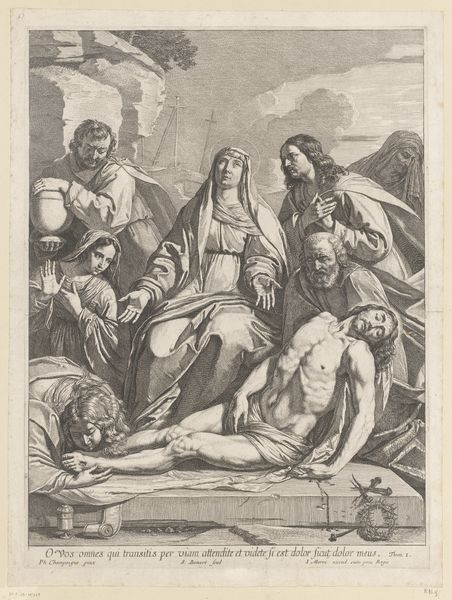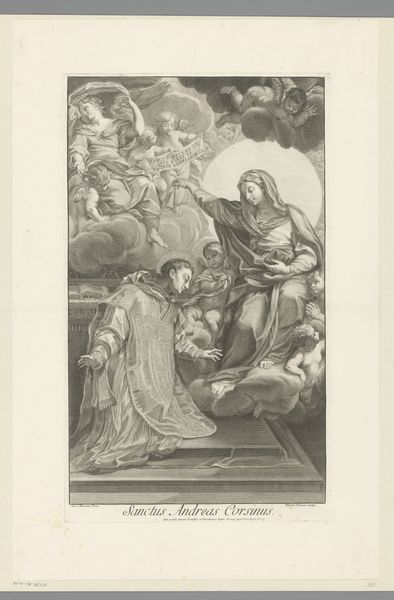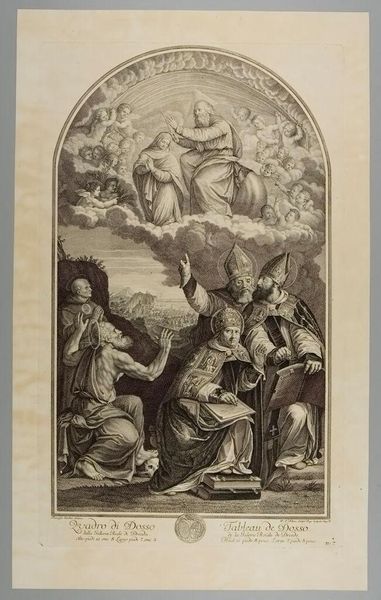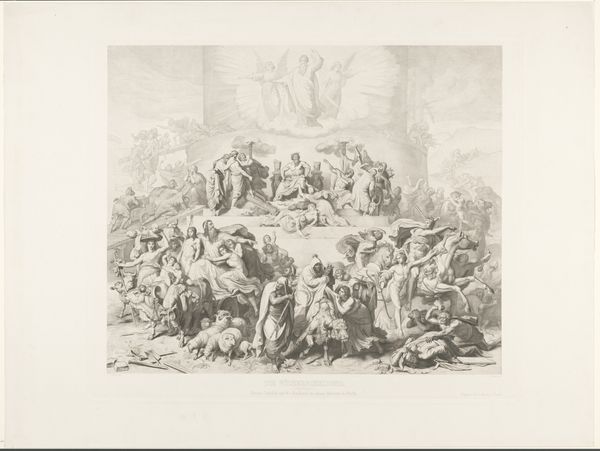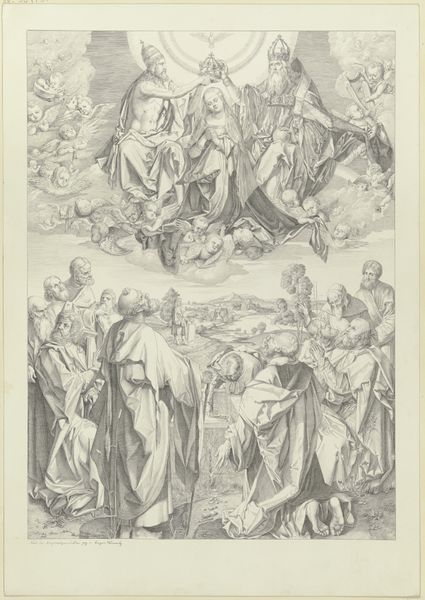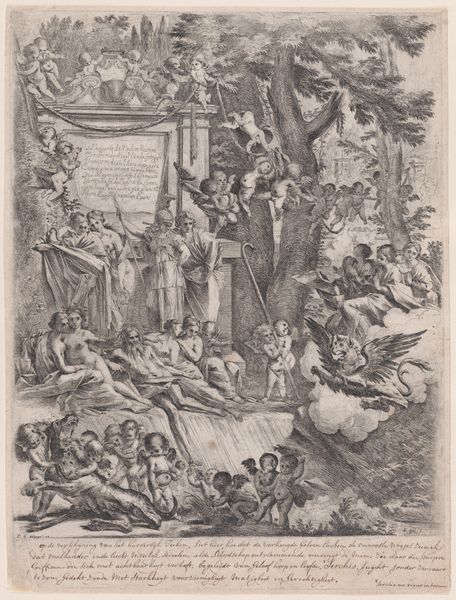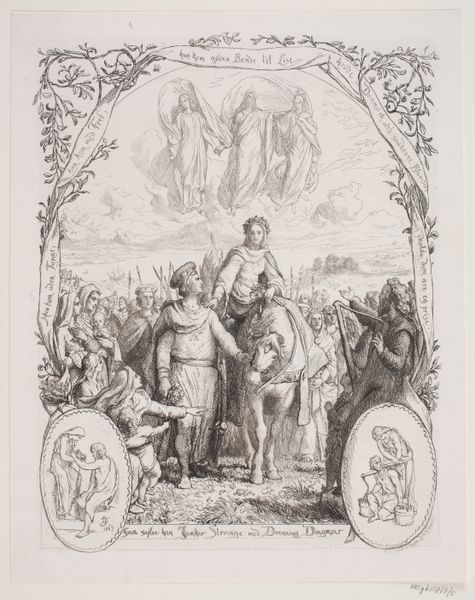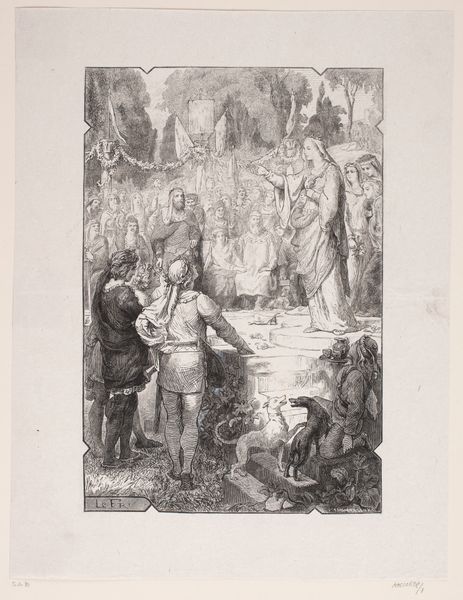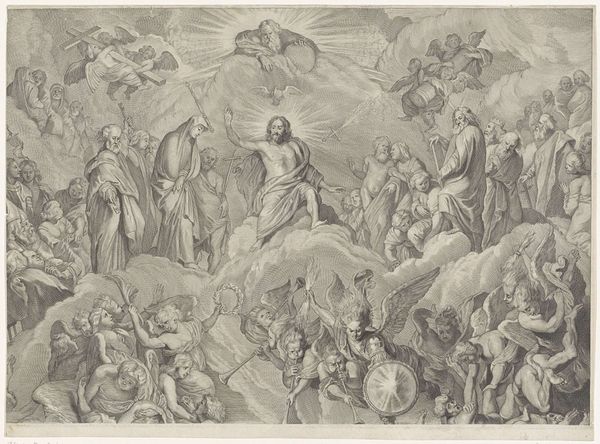
drawing, print, etching, engraving
#
drawing
#
ink drawing
#
narrative-art
# print
#
etching
#
history-painting
#
engraving
Dimensions: 307 mm (height) x 229 mm (width) (bladmaal)
Curator: This engraving from 1863 by Lorenz Frølich is an illustration for "The Lord's Prayer." What strikes you most immediately? Editor: Well, the stark contrast gets me first. All those delicate lines to depict...suffering, really. A whole economy of labor embedded in that rendering. Curator: It's intense, isn't it? Frølich captures a powerful dichotomy between divine serenity and human turmoil. The upper register is luminous with that prayer, then you see what looks like a descent into hell, literally. Editor: Absolutely. And considering this is a print, we should think about its wider dissemination. Reproducing images makes them available to different layers of society – but what specific material conditions informed Frølich’s choices in creating this piece? Was he consciously designing a work that would speak to different viewers or consumers? Curator: That’s such a valid point! And perhaps it speaks to our own dual nature. This image works its way into my heart through both agony and… acceptance. It acknowledges the totality of experience – not just the pretty parts. The composition itself mirrors this – a top-down structure where one extreme impacts the other, a material condition where our own humanity is printed into every etched line. Editor: You've touched upon materiality which resonates with how such religious imagery functions—like mass-produced rosaries and saint medallions, where repetition imbues the object with spiritual worth beyond its literal materials. Was it initially a commission? I would be curious to dig deeper into Frølich's work conditions, fees and reception and the effect all these factors may have had in its social life. Curator: These are definitely relevant avenues of study; in fact, knowing a bit of the economic exchange would shift its gravity in new directions. But beyond this, it touches on timeless fears— the unknown, death, injustice— things that haunt and ultimately make our world worth saving, line by agonizing line. Editor: It’s unsettling and deeply resonant all at once – even for this devoted materialist. It gives plenty to examine about the intersection of craft, faith, and social conscience.
Comments
No comments
Be the first to comment and join the conversation on the ultimate creative platform.
